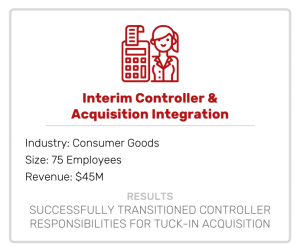
LinkedIn is the best social media platform to develop and showcase your professional brand and interact with other industry influencers. It’s also an increasingly important component of the hiring process, with 94% of employers referring to a candidate’s LinkedIn profile before extending an offer.
We’ve already covered the basics of social media for Accounting & Finance professionals. Now, we’ll drill into the tactics you can use to strengthen your online presence. Specifically, how you can craft a killer LinkedIn profile that properly showcases your skills, abilities, and your impeccable personal brand.
According to LinkedIn, users with a profile photo are 14 times more likely to be viewed than those without them. So yes, you absolutely need one. But you need the right one. Your profile photo should be a recent headshot of you in professional dress. A neutral background is best, but don’t be afraid to showcase some warmth and personality. Avoid photos of you in unprofessional situations, like your recent beach vacation or a raucous happy hour.
Your headline is only 120 characters long, but it is the most important part of your profile. Keep yours concise but creative, and use as many industry keywords as you can, without resorting to clichés (translation: no generic buzzwords). It may take some time, but the right headline will make you much more visible when others search your industry.
The first part of your background tops out at a 2,000 character max. While you don’t have to (and likely shouldn’t) fill this entire section to the brim, you should aim for at least 40 characters to maximize your SEO potential. Like your headline, your summary should showcase your personal brand while remaining succinct and employing strategic industry keywords . Focus on your skills and accomplishments, and include links to examples of your work wherever possible. This last step adds considerable credibility, and provides your connections with solid examples of your work.
You have the most freedom in your experience section, with 100 characters for your position title and an additional 2,000 characters per description. This section should read like your dream résumé, where you can list all previous experience and accomplishments without any fear of page limits. That does not mean it should be long-winded and effusive. On the contrary, it should remain as clean, clear, and precise as the rest of your profile. And, of course, your actual résumé. But you can add links to videos, websites, or other examples of your accomplishments that are not possible with a traditional résumé. And be sure to include volunteer experience, as this reflects favorably on employers and colleagues.
This section showcases past and present projects, and like the rest of your profile, it is always an excellent idea to include links to actual deliverables whenever possible. You can include everything from white papers to graphic design, so be sure to list all relevant accomplishments.
Like in your résumé, you should include information on institutions attended and degrees earned. Unlike a résumé, you can highlight relevant courses or assignments to increase your specificity and credibility. Furthermore, this section is a great tool to connect with other alumni, like your old college roommate or your favorite professor.
This section is second only to your summary in its importance and potential. Listing your discrete skills for potential employers to see is an excellent way to get noticed, and the more endorsements those skills have, the more credible you are as an influencer and candidate. Don’t be afraid to reach out to previous employers or colleagues to request these endorsements. If you’d like to take this a step further, your professional connections can even submit recommendations that will be published directly to your profile!
Like Facebook, LinkedIn allows users to post updates – articles, photos, etc. – as often as they please. Unlike Facebook, however, your LinkedIn posts should always remain strictly professional. For example, a clear photo of a conference or industry event is encouraged, but photos of your beach vacation are not. If you do post articles, make sure they are related to your industry. Whenever possible, include a picture in any article posts to ensure that it will be seen by more people.